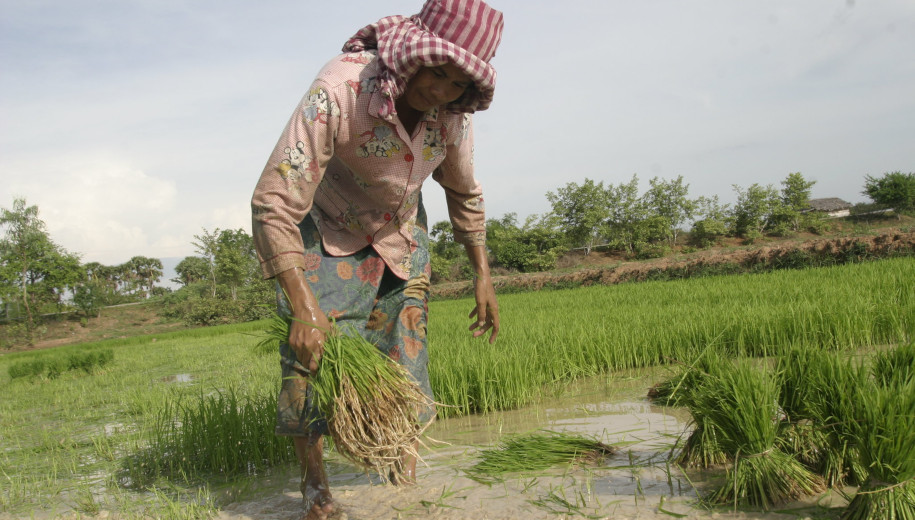17/10/20
Bigger sometimes is better when it comes to farm size

By: Edd Gent
Send to a friend
The details you provide on this page will not be used to send unsolicited email, and will not be sold to a 3rd party. See privacy policy.
[NEW DELHI] Small farms in the developing world do not perform better than large ones if costs and labour are factored in rather than just crop production, says a new study.
Pedro Andrés Garzón Delvaux, EU economist and lead author of the study published in Science Advances, this month, says that the belief that small farms are more productive than big ones has resulted in explicit or implicit support for smallholder-focused development strategies.
“You need to integrate social policy alongside rural development and not mix the two or assume that one will bring the other with it”
Pedro Andrés Garzón Delvaux
According to the Food and Agriculture Organization of the United Nations (FAO), about 90 per cent of the world’s 570 million farms are small and most are found in the rural areas of the developing world, but they produce food for a substantial proportion of the world’s population. Many small farmers take on other economic activities to add to their small incomes.
Since the 1960s, researchers have consistently found that in developing countries crop yields per hectare drop as farms increase in size. The so-called inverse farm-size productivity relationship flies in the face of findings in the developed world, where bigger farms normally have higher productivity thanks to economies of scale and greater mechanisation.
According to Garzón Delvaux, the inverse farm-size productivity relationship appears to suggest that two birds can be killed with one stone — supporting the poorest farmers as well as fostering development.
But after analysing more than 500 research papers on the topic, Delvaux and colleagues show that policies supporting small farms may not be the best route to rural development. “The call is to disentangle these two concepts," he says. “You need to integrate social policy alongside rural development and not mix the two or assume that one will bring the other with it.”
The study analysed more than 1,000 case studies recorded between 1997 and 2018 and found the probability of falling performance as farm size increased at 65—77 per cent when measured by crop yields or monetary value of outputs. But this dropped to 39—62 per cent when relying on a farm’s profitability or even further to 26—42 per cent when relying on measures of economic efficiency.
Rather than simply focusing on supporting smallholders, development policy should try to tackle the reasons for this inefficiency, says Garzón Delvaux. Often, it is caused by a lack of alternative sources of income or difficulties in acquiring more land for farming due to lack of access to credit or restrictive property laws, he adds.
“The big effort,” says Garzón Delvaux, “should be to support them in moving towards other activities than directly farming the land.”

According to Garzón Delvaux, the efficiency or profitability of a farm has a far more direct impact on the economic fortunes of farmers than raw yields and the study results suggest that while smaller farms may produce more crops, it does not necessarily translate into rural development.
Previous research has suggested yields are higher on small farms because entire families work on them, so the amount of labour invested per hectare is far higher than commercial farms. “But it's completely inefficient,” says Garzón Delvaux. “This is not going to allow them to move out from poverty.”
The study also found the inverse farm-size productivity weakening over time. The probability of finding it dropped from 88 per cent in 1990 to 66 per cent in 2017 — suggesting that some of these changes are already underway.
“The article is magnificent in its rigour in documenting this. They've done everybody a service and it's a point of record that we can all turn to,” he says. “Is it somehow going to dramatically change our development thinking? No.”
There is still a sizeable section of the development community focused on supporting smallholders for ideological reasons though, says David Laborde, an economist at the International Food Policy Research Institute (IFPRI). He says the paper’s scale and comprehensiveness support the idea that size doesn’t matter when it comes to farm performance.
“Medium, large or small farms all have their role or their niche,” he says. “Thinking that we want to keep all of them smallholders just because they have high yields will be a dead end.”
This piece was produced by SciDev.Net’s Asia & Pacific desk.













